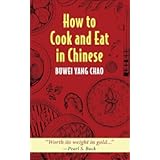The video clip, with its playful dismissal of Pasta Aglio e Olio, humorously highlights a common misconception about one of Italian cuisine’s most deceptively simple, yet profoundly satisfying, dishes. Many seasoned home cooks and culinary professionals alike often overlook the true artistry inherent in preparing a stellar plate of Pasta Aglio e Olio, believing its sparse ingredient list makes it trivial. This perception, however, couldn’t be further from the truth; the real “issue” isn’t the dish itself, but a widespread underappreciation for its nuanced execution and the deep, complex flavors that emerge when its core components are treated with respect.
The “solution” to this culinary oversight lies in understanding that great Pasta Aglio e Olio isn’t merely about tossing together garlic, oil, and spaghetti; it’s a masterclass in balance, technique, and the celebration of minimalist perfection. It challenges a cook’s precision and intuition, turning humble ingredients into a transcendent experience. This article aims to delve into the depths of this iconic dish, revealing the expert techniques and philosophical approaches necessary to elevate it from a mere last-minute meal to a testament to authentic Italian cooking, transforming any playful skepticism into genuine culinary admiration.
The Paradox of Simplicity: Unpacking Pasta Aglio e Olio’s Appeal
Pasta Aglio e Olio, literally “pasta with garlic and oil,” stands as a beacon of minimalist cooking, yet its very simplicity often leads to its downfall in inexperienced hands. The common pitfall is to treat it as a rushed affair, a mere assembly of ingredients rather than a deliberate culinary process. Think of it like a perfectly tailored suit; while the components are basic—fabric, thread, buttons—the final garment’s elegance and fit are entirely dependent on the tailor’s skill and attention to detail. Similarly, this iconic Italian pasta dish demands a keen understanding of its fundamental elements to truly shine.
Many aspiring chefs underestimate the transformative power of patience and proper technique when dealing with so few ingredients, often rushing the garlic or failing to achieve the critical emulsification. The challenge presented by Aglio e Olio is not in finding exotic components, but in extracting maximum flavor from the familiar. It’s a culinary tightrope walk where every step, from the quality of the olive oil to the exact moment the pasta hits the pan, profoundly impacts the final symphony of tastes and textures. Mastering this seemingly effortless dish becomes a rite of passage for those truly passionate about Italian cuisine, proving that true excellence often lies in the refined execution of the understated.
The Holy Trinity of Flavor: Garlic, Olive Oil, and Chili
At the heart of any truly exceptional Pasta Aglio e Olio lies the impeccable preparation of its three foundational pillars: garlic, olive oil, and optional chili flakes. The garlic, arguably the star, must be treated with reverence; it’s not just about adding a pungent kick, but coaxing out its sweet, aromatic essence without any hint of bitterness. Achieving this requires thinly slicing or finely mincing the cloves and gently infusing them into the olive oil over a very low heat, allowing them to turn a delicate, golden blonde rather than a harsh, acrid brown.
The olive oil itself is far more than a mere cooking medium; it acts as the canvas upon which the flavors are painted, and its quality is non-negotiable for an authentic dish. An extra virgin olive oil with a robust, fruity aroma will impart a depth that bland alternatives simply cannot replicate, binding the flavors of the garlic and chili into a cohesive, rich base. Furthermore, the judicious use of chili flakes provides a nuanced warmth, a subtle counterpoint that awakens the palate without overpowering the delicate garlic and oil. These elements, when handled with expert care, create a harmonious base that sings with complexity, proving that the most profound flavors often emerge from the simplest, highest-quality ingredients.
Selecting and Preparing Your Essential Ingredients
Choosing the right garlic is paramount for a superior Pasta Aglio e Olio; opt for fresh, firm cloves with no sprouts or soft spots, as these can impart an unwanted bitterness. The manner in which garlic is prepared significantly alters its flavor profile, with thin slices offering a more mellow, infused taste and minced garlic delivering a more assertive punch. Similarly, the choice of olive oil is not a minor detail but a critical decision affecting the entire dish’s character; a high-quality extra virgin olive oil from a reputable producer will offer complex notes ranging from peppery to grassy, providing a robust backbone.
For those who appreciate a gentle warmth, premium Calabrian chili flakes, or a thinly sliced fresh chili, can be added to the infused oil, ensuring the heat complements rather than dominates. Even the selection of pasta plays a crucial role; while spaghetti is traditional for Pasta Aglio e Olio, its rough texture provides an ideal surface for clinging to the emulsified sauce. The careful consideration of each ingredient, down to its origin and preparation, acts as a foundational step toward achieving the legendary status of this simple yet exquisite dish, echoing the Italian culinary philosophy that exceptional results stem from exceptional inputs.
The Art of Emulsification: Crafting the Silken Sauce
The true genius behind a truly transcendent Pasta Aglio e Olio lies in the magical transformation of starchy pasta water and infused olive oil into a lustrous, cohesive sauce through the process of emulsification. This is not merely about combining liquids; it’s an alchemical reaction that elevates the dish from a simple dressing to a rich, glossy coating that clings lovingly to every strand of pasta. Achieving this perfect bind requires precise timing and a deep understanding of how starches interact with fats, much like a skilled barista carefully steams milk to create microfoam for a latte, where texture is as crucial as taste.
As the pasta cooks, it releases starches into the boiling water, creating a cloudy, viscous liquid that becomes an invaluable component of the sauce. Towards the end of the pasta’s cooking time, a ladleful of this starchy water is added to the pan containing the gently browned garlic, chili, and infused olive oil. Vigorous stirring or tossing then coaxes the fat and water to combine into a creamy, almost velvety emulsion, binding all the flavors together and ensuring that the sauce doesn’t separate. This crucial step is the difference between a dry, oily dish and one that boasts a luxurious, deeply flavorful coating that truly defines the Aglio e Olio experience.
Techniques for Perfecting the Sauce
To master the emulsion for Pasta Aglio e Olio, begin by undercooking your spaghetti slightly, ensuring it retains enough bite to finish cooking directly in the sauce. This allows the pasta to absorb the aromatic flavors and further release its starches into the pan, aiding the emulsification process. As you drain the pasta, make sure to reserve at least a cup of the starchy cooking water, as this liquid gold is essential for achieving the perfect consistency. The gradual addition of this hot, starchy water to your garlic-infused olive oil, while continuously tossing or stirring, encourages the fats and liquids to merge into a smooth, thick sauce.
Another expert tip involves using a whisk or vigorously shaking the pan to create the initial emulsion, which then continues to develop as the pasta is added. The goal is to achieve a consistency where the sauce coats the pasta without being overly thin or clumpy, creating a harmonious blend that offers both visual appeal and a luxurious mouthfeel. Monitoring the sauce’s texture and adjusting with small splashes of pasta water, much like a painter adding layers to a canvas, allows for precise control over the final product, transforming simple ingredients into a dish of profound culinary elegance.
Elevating Your Aglio e Olio: Beyond the Basics
While the traditional Pasta Aglio e Olio is a testament to purity, experienced chefs often introduce subtle enhancements that elevate the dish without betraying its minimalist spirit. One such nuance involves incorporating a delicate hint of citrus, perhaps a whisper of lemon zest, which brightens the overall flavor profile and adds a layer of sophisticated freshness. This addition acts as a high-frequency note in a melody, cutting through the richness of the olive oil and awakening the palate to the subtle complexities of the garlic and chili.
Another subtle yet impactful technique is the finishing touch of freshly chopped Italian flat-leaf parsley, added just before serving. Beyond its vibrant green hue, parsley contributes a herbaceous, clean counterpoint that refreshes the palate and adds another dimension to the aroma, completing the dish with a flourish. Think of these enhancements not as deviations, but as refined brushstrokes on a masterpiece, designed to amplify the inherent beauty of the original composition. These thoughtful additions ensure that your Aglio e Olio not only satisfies but truly impresses, offering a deeper culinary experience.
Subtle Enhancements and Serving Suggestions
For those looking to explore beyond the classic rendition of Pasta Aglio e Olio, consider experimenting with different types of pasta, such as linguine or bucatini, which offer varied textures and sauce-clinging capabilities. A common addition, particularly in Southern Italy, is a scattering of toasted breadcrumbs, often pan-fried in olive oil with a touch of garlic, which provides a delightful textural contrast and a rustic, nutty flavor. This addition, often called “poor man’s Parmesan,” provides an unexpected crunch that complements the silken pasta beautifully, much like a surprise plot twist in a captivating narrative.
When serving, a final drizzle of your highest quality extra virgin olive oil, perhaps a finishing oil with a more pronounced peppery note, can elevate the aroma and flavor even further. Some gourmands also advocate for a tiny pinch of sea salt flakes just before the first bite, enhancing the existing flavors without making the dish overtly salty. These refined touches demonstrate a profound understanding of flavor dynamics, transforming a simple dish into an unforgettable culinary statement that celebrates the enduring allure of Pasta Aglio e Olio.











